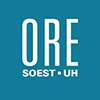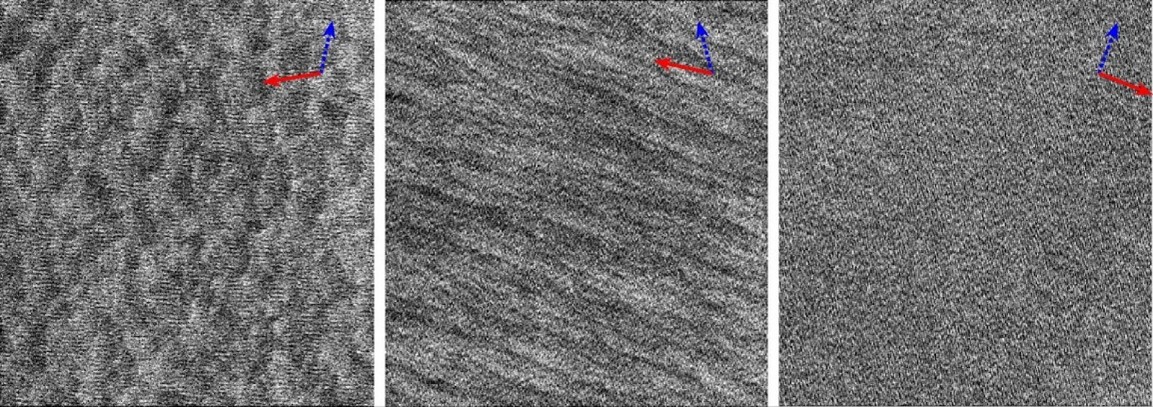To subscribe to the ORE seminar mailing list, click here.
For a (working draft) list of upcoming seminars, click here.
If you are interested in giving an ORE seminar, please contact us at nosal [at] hawaii [dot] edu.
MS Plan B Defense: Modeling of hurricane waves for design of coastal infrastructure
Zoom Meeting ID______ 853 4276 3602 Passcode: U7H0uXGiannicola Tumino Di Costanzo Graduate Student Department of Ocean and Resources Engineering University of Hawaiʻi at Mānoa The subtropical Hawaiian Islands are subject to occasional hurricanes that bring the risk of infrastructure damage and financial loss. Determination of hurricane wave conditions in terms of return period is important for coastal infrastructure design and risk management. This study assembles and validates a hurricane wave model and utilizes the model to determine probabilistic design wave conditions for a study site at west Maui. The Delft3D software, which includes a parametric hurricane model and SWAN (Simulating Waves Nearshore), is used to determine significant
MS Plan A Defense: Morphodynamic changes due to calm-moderate wave forcing: A case study of Waikiki Beach
Zoom Meeting ID______ 999 8388 9554 Passcode: OREJulianne Kalksma Graduate Student Department of Ocean and Resources Engineering University of Hawaiʻi at Mānoa Sea level rise, erosion, and the wave climate influence Waikiki Beach on the South Shore of Oahu which is a popular beach in metropolitan Honolulu. In response to recent erosion events and ongoing beach nourishments, weekly surveys have been collected for the past 3 years, from April 2018 through December 2020, to better understand coastal morphology. Local studies found detailed two-dimensional morphological structures; however, no direct relationships between the offshore driving ocean conditions and Waikiki Beach have been established. Other previous works relate the wave
MS Plan B Defense: Simulation and validation of the effects of thermally buoyant flow on Subsea Laser Transmission
Zoom Meeting ID: 961 6222 2366 Passcode: OREseminarStefan Mrozewski Graduate Student Department of Ocean and Resources Engineering University of Hawaii at Manoa Point-to-point underwater laser communication systems are being developed to address increasing subsea data needs and bandwidth requirements. Many use cases - such as transmitting data from distributed sensors installed on subsea oilfield infrastructure - feature laser beams passing above heat sources such as flowlines. These thermal sources induce natural convection in the surrounding seawater, changing its refractive index. Maintaining point-to-point laser telemetry thus requires characterizing and mitigating the effects of these thermally buoyant flows on beam propagation. Hydrodynamics code is used to simulate heat and
Seminar: Improving Odontocete Acoustic Tracking Performance Using More Informative Measures
Zoom Meeting ID______ 935 9608 7383 Passcode: OREseminarPina Gruden, PhD Postdoctoral Acoustic Researcher Joint Institute for Marine and Atmospheric Research, UH Mānoa Passive acoustic monitoring (PAM) is a frequently used tool for various aspects of marine mammal research, including identifying species, their abundance and behavior. Traditionally, boat-based visual line-transect surveys are carried out with the goal of estimating species abundance. PAM is an important addition to visual surveys, especially for elusive species (in which groups are frequently missed by visual observers), species with complex group structure, and species that show behavioral response to boat presence. This seminar will discuss the challenging problem of tracking multiple false
Seminar: Fundamentals of Collision and Constraint Dynamics: Review and Potential Applications in Ocean Engineering
Zoom Meeting ID______ 935 9608 7383 Passcode: OREseminarAlbert S. Kim Professor and Graduate Chair Department of Civil and Environmental Engineering University of Hawai'i at Mānoa Hydrodynamic impacts and interactions between fluid flow and solid objects--both moving and stationary--are of great importance in various engineering disciplines from nano- to ocean-scale phenomena. These processes include aggregate/aggregation dynamics of sub-micron particles (as point masses), granular dynamics (as inelastic bodies of finite volumes) for pharmaceutical manufacturing processes and sediment transport in ocean engineering, and classical dynamics of rigid bodies as big as vehicles and shipping containers. Although the collision and constraint dynamics applications have vast length-scale ranges, the principles and
Seminar: Subsea Free Space Optics
Zoom Meeting ID______ 935 9608 7383 Passcode: OREseminarLarry Hagstrom Business Area Manager Sidus Solutions This talk will present an overview of ‘free space’ optics, or sending data via light modulation between photonic sensors. Use cases for subsea applications will be presented to demonstrate wireless communication (using only light) between sensors and subsea vehicles. About the speaker Larry Hagstrom is the Business Area Manager for Sidus Solutions, a San Diego-based company that provides subsea technology and surface surveillance technology. Hagstrom's clients include General Dynamics, Raytheon, Oceaneering, BP, Chevron, Fugro, Petrobas, and the US Navy. Hagstrom is the chairperson for the San Diego chapter of the Marine Technology Society.
Seminar: Tsunami Generation Mechanism of Historical Hawaii Local Tsunamis
Zoom Meeting ID______ 935 9608 7383 Passcode: OREseminarDr. Yoshiki Yamazaki Assistant Researcher Department of Ocean & Resources Engineering University of Hawai’i at Mānoa The 4 May 2018 MW 6.9 earthquake offshore of Kilauea Volcano at Hawaii Island has raised concern to emergency management agencies in Hawaii because of locally generated tsunami’s short arrival time and unpredictable amplitude along the Hawaiian Islands. Fortunately, the tsunami impact of the 2018 MW 6.9 earthquake was moderate over the entire Hawaii island chain. However, Hawaii experienced two larger earthquakes in recorded history, the 1975 MW 7.7 Kalapana and 1868 M ~7.9 Ka`u earthquakes at the south flank of Hawaii Island.
Seminar: Wind-tracing Floating Offshore Structures
https://hawaii.zoom.us/j/93596087383Dr. Masoud Hayatdavoodi Associate Professor in Marine Hydrodynamics and Ocean Engineering School of Science and Engineering University of Dundee Dundee, Scotland, UK Offshore wind is a promising source of marine renewable energy, and one of the fastest-emerging energy alternatives. The UK and many other countries have invested heavily on wind energy, and it is expected that wind, along with solar, would be the two dominant forms of renewable energy soon. Main advantages of the offshore wind resources over near shore options include (i) access to more consistent and powerful wind, (ii) flexibility in site selections, (iii) elimination of visual
Seminar: Relating Observed Marine Boundary Layer Cells, Rolls, or Their Absence to Surface Layer Stratification Using Sentinel-1 SAR Data
https://hawaii.zoom.us/j/93596087383Dr. Justin Stopa Assistant Professor Department of Ocean and Resources Engineering University of Hawai'i at Mānoa Zoom Meeting Link: Meeting ID: 935 9608 7383 Passcode: OREseminar https://hawaii.zoom.us/j/93596087383 We live in the layer of the atmosphere that extends upward from the ground to a typical height of 1 km. This lower portion of the atmosphere interacts with the ocean and exchanges gas and heat which drives the weather and climate. Datasets describing the lower portion of the atmosphere in the open ocean are sparse. We are motivated to fill this data gap by proposing a marine atmospheric boundary layer state indicator
Seminar: Moving Ship Tomography and Passive Processing Approaches to Characterize Environmental Parameters
https://hawaii.zoom.us/j/93596087383Dr. Kay L. Gemba Associate Professor of Physics Naval Postgraduate School Zoom Meeting Link: Meeting ID: 935 9608 7383 Passcode: OREseminar https://hawaii.zoom.us/j/93596087383 Passive processing approaches provide utility to characterize acoustically relevant parameters to improve environmental awareness. Of particular interest are transiting surface vessels due to their high acoustic intensity and wide-band energy. To understand quantitatively the value-added of moving ship observations, a controlled experiment was conducted in the Santa Barbara Channel in 2016. These data are used in a data-assimilation approach, initialized with an oceanographic circulation model. The estimated vertical sound-speed structure compares well with ground-truth observations. Current work focuses
Seminar: Multiphase Flow Simulations of Impulse Waves Generated by Subaerial Granular Landslides
https://hawaii.zoom.us/j/93596087383Dr. Zhenhua Huang Associate Professor Department of Ocean and Resources Engineering University of Hawai'i at Mānoa Zoom Meeting Link: Meeting ID: 935 9608 7383 Passcode: OREseminar https://hawaii.zoom.us/j/93596087383 Sub-aerial granular landslides falling into lakes, reservoirs, or bays can generate larger impulse waves and cause adverse impacts on human lives in affected areas. The processes of granular landslides and impulse-wave generation are multiphase phenomena in nature, involving air, water and sediment. In this talk, a multiphase flow model to investigate such processes will be introduced and the effects of an erodible bed and grain size will be examined through numerical examples. Applications
Seminar: Experimental Findings of Fixed Oscillating Water Column Wave Energy Converter System through the Testing Expertise and Access for Marine Energy Research Program
https://hawaii.zoom.us/j/93596087383Nicholas Ulm PhD Student Department of Ocean and Resources Engineering University of Hawai'i at Mānoa Zoom Meeting Link: Meeting ID: 935 9608 7383 Passcode: OREseminar https://hawaii.zoom.us/j/93596087383 With a rising interest in blue economy applications of wave energy, a shift in the design process for wave energy converters needs to be considered for each alternate application. Autonomous underwater vehicle (AUV) docking powered by a wave energy converter (WEC) has been investigated over the past decade, but as separate technologies. Recent developments in the blue economy have brought the two technologies together in a proposed design of an underwater docking system for

